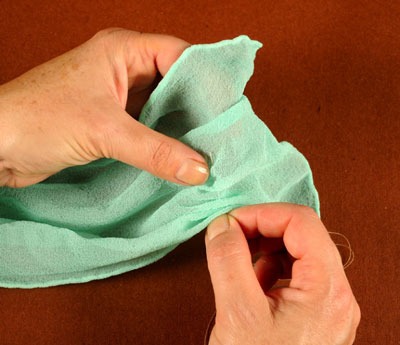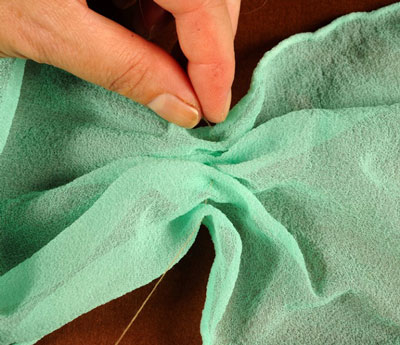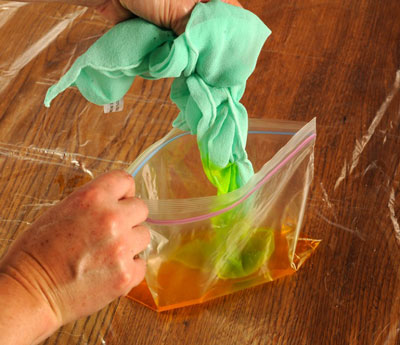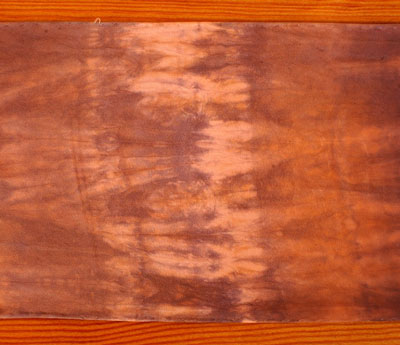Dyeing silk scarves is a fun way to use leftover dyes. It’s also a neat way to experiment with mixing colors and to explore textile surface design techniques. The two-part process described here uses silk blanks in a technique that involves immersion dyeing (in two steps) and a shibori resist technique to create pattern.
Gather these materials:
Four 11 x 60-inch crepe de chine silk scarf blanks
An unexhausted acid dye bath
Leftover acid dyes
White cotton string
Embroidery or small scissors
Needle and thread
Place the blank scarves in a warm presoak with 1⁄2 teaspoon Synthrapol.
Allow them to soak for at least 1 hour.
An unexhausted dye bath with a visible amount of leftover dye will dye the scarves a pale overall color.
You may add more dye to the unexhausted bath to deepen the color. Add more dye in small increments (25ml at a time). Check the dye bath, making sure the pH range is between 4 and 6. Add 1 teaspoon citric acid crystals if needed.
Add the scarves to the dye bath and gradually raise the temperature of the bath to 185°F (85°C).
Do not let the temperature go beyond this point or it will ruin the luster of the silk. Allow the scarves to simmer for 30 minutes.
When the dye bath has cooled completely, rinse the scarves in warm water. Then hang them on a rack to dry.
Use a fine sewing needle and thread to make 1⁄4-inch stitches about 1 inch apart at intervals across the width of the scarf.

Create gathers by pulling the cut ends of the sewing thread. Make knots at both ends of each thread so the gathers remain intact during the dye process.

Place approximately 100ml acid dye with 1 tablespoon white vinegar in a locking baggie. Immerse the tied scarf in the dye.

Place the baggie in a steam pot. Steam for 30 minutes to set the dye, keeping the temperature no higher than 185°F (85°C).
When the scarf has cooled, carefully remove the stitches and rinse the scarf in warm water.


